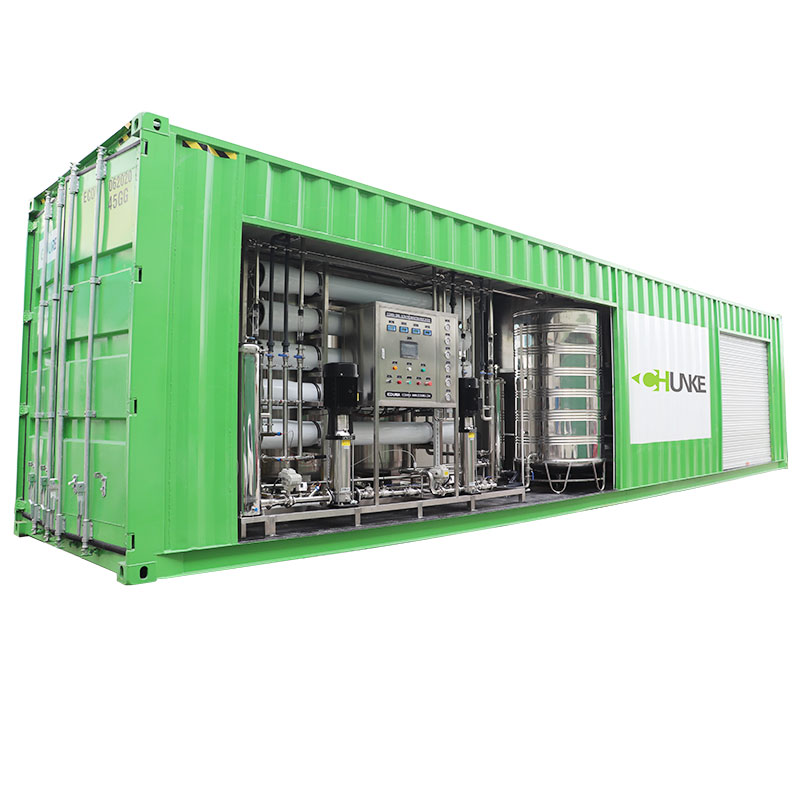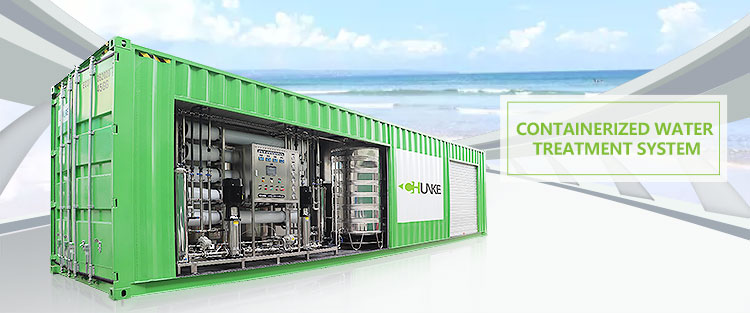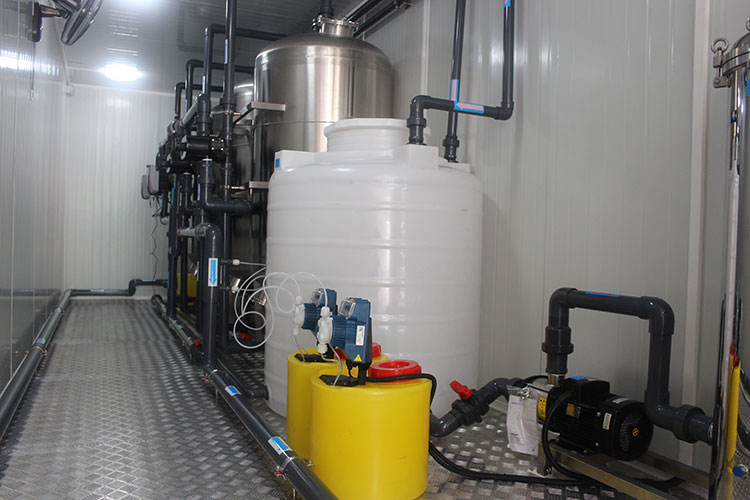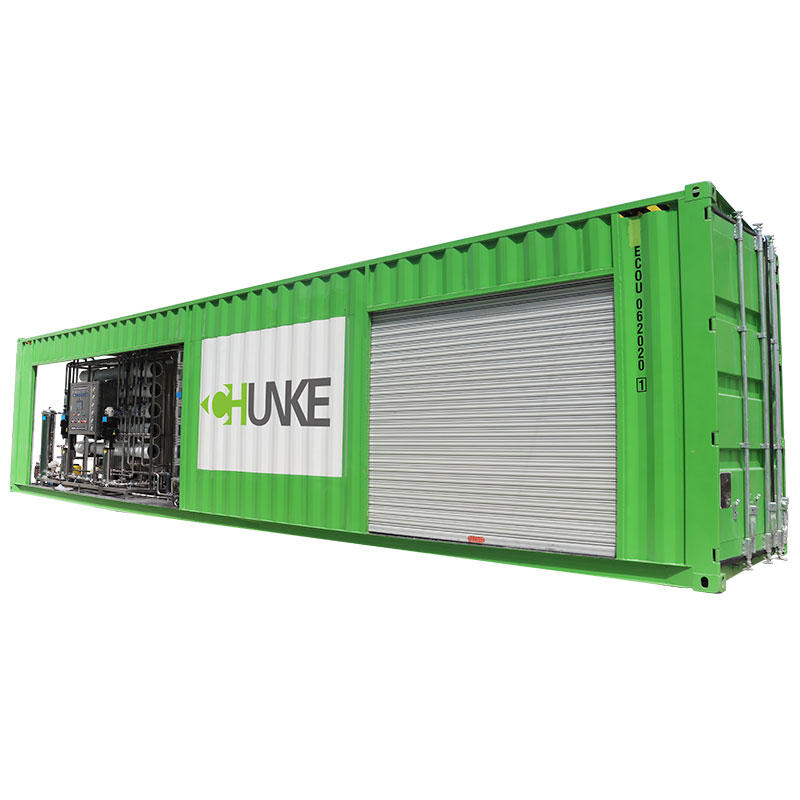What kind of container water treatment system is the best choice?
As a flexible and convenient water treatment solution, container water treatment systems have been increasingly valued in various application scenarios in recent years. Such systems can be deployed in industrial facilities, remote areas, military bases, disaster relief and other environments to provide clean drinking water and wastewater treatment capabilities to where they are needed.
However, faced with a wide variety of container water treatment systems on the market, consumers or purchasers often find it difficult to decide which system is the best choice.
This article will delve into the key factors to consider when choosing a container water treatment system to help you make an informed decision.

1. Understanding container water treatment systems
As the name suggests, container water treatment systems are a modular solution that integrates water treatment equipment in a standard container. Its main advantages are convenience and flexibility. It can be quickly transported to the required location and installed and debugged in a short time and put into use.
These systems usually have multiple functions, such as purifying drinking water, treating industrial wastewater, reclaiming water resources, etc., which can meet the water quality requirements in different environments. Containerized water treatment systems can be customized to meet specific needs, integrating different water treatment technologies and equipment, such as reverse osmosis (RO), ultrafiltration (UF), ultraviolet disinfection, activated carbon filtration, softeners, etc.
2. Key factors for choosing the best containerized water treatment system
When choosing a containerized water treatment system, there are several key factors that need special attention to ensure that the selected system can meet your specific needs.
Water quality requirements and treatment goals
Water quality analysis is the first step in choosing a suitable system. Different water sources (well water, surface water, seawater, wastewater, etc.) contain different pollutants and impurities, and therefore require different treatment processes. You need to identify the type of water source that needs to be treated and its main pollutants, such as suspended solids, organic matter, heavy metals, bacteria, viruses, etc.
Based on the results of the water quality analysis, you can determine which water treatment processes are needed. For example, if the water contains a high concentration of dissolved solids, a reverse osmosis system may be required; if the water is turbid, an ultrafiltration or microfiltration system is required; if there are more organic matter and odor in the water, an activated carbon filter may be necessary.
The treatment goal is also an important consideration. Do you need to treat water to drinking water standards, or just industrial standards? Do you need to recycle wastewater for reuse? These goals will directly affect the complexity and cost of the system required.
System Capacity and Processing Capacity
The capacity and processing capacity of container water treatment systems is another key factor. You need to choose a system of the right size based on your actual needs.
Processing capacity is usually measured in terms of the amount of water treated per hour or day. For example, a system that needs to provide drinking water to a small community may have a processing capacity of 10 cubic meters per hour; while an industrial wastewater treatment system may require a larger processing capacity of 50 or 100 cubic meters per hour.
In addition, consider the system's peak processing capacity, which is the maximum amount of water that the system can process in a short period of time. This is particularly important when dealing with situations where the water quality varies greatly or the usage fluctuates greatly.

3. Modular Design and Customization
Modular design makes container water treatment systems more flexible. Depending on your specific needs, you can choose to combine different treatment modules (such as filtration, softening, disinfection, sludge treatment, etc.) to form a complete system. This design is not only easy to upgrade and expand, but also allows for quick replacement of a module when needed to address specific water quality issues.
Customization is also important. Different use scenarios have different requirements. For example, remote areas may need to consider the system's self-sufficiency (such as whether it can be self-powered), while military bases may have special requirements for the system's mobility and concealment. Choosing a supplier that can customize according to your needs can ensure that the system is more in line with actual usage conditions.

4. System reliability and maintenance requirements
Reliability is a factor that cannot be ignored when choosing a container water treatment system. Since these systems are usually deployed in locations with harsh environmental conditions, such as remote areas, disaster areas, or industrial sites, their equipment must be able to withstand long-term continuous operation and complex water quality treatment tasks. Therefore, the durability and stability of the system are particularly important.
When choosing a reliable system, you should not only consider the quality of the equipment itself, but also pay attention to the system's redundant design, degree of automation, and fault alarm and handling mechanisms. For example, a filter with automatic cleaning function can reduce the frequency of manual maintenance, while a system with remote monitoring function can issue an alarm in time when a problem occurs.
Maintenance requirements should also be taken into consideration. A system with low maintenance requirements and long maintenance cycles can significantly reduce operating costs, especially in environments with limited personnel and resources. Please ensure that the system supplier can provide comprehensive after-sales service and technical support, and there should be sufficient spare parts supply when necessary.
5. Energy consumption and environmental performance
The energy consumption of the container water treatment system is an important factor that directly affects the operating cost. When selecting a system, the energy efficiency ratio of the equipment should be considered, and high-efficiency and low-energy consumption equipment should be selected as much as possible. In addition, the power supply requirements of the system should also meet the power supply conditions of the actual application environment. In some cases, the use of backup power or renewable energy such as solar energy may need to be considered.
Environmental performance is also worthy of attention. Although water treatment itself is an environmentally friendly activity, by-products such as wastewater, sludge and exhaust gas may be generated during the treatment process. Choosing a system that produces fewer by-products and low wastewater discharge during the treatment process can not only reduce environmental impact, but also meet the increasingly stringent environmental regulations.

6. Cost-effectiveness analysis
Finally, cost-effectiveness is also a key factor to consider when selecting a container water treatment system. The initial investment cost, operation and maintenance costs, consumable replacement costs, energy consumption costs, etc. of the system need to be included in the calculation of the total cost.
An economically efficient system should minimize the total cost of ownership (TCO) while meeting processing requirements. Before making a purchase decision, it is recommended to conduct a detailed cost-benefit analysis to weigh the initial investment against long-term operating costs.




